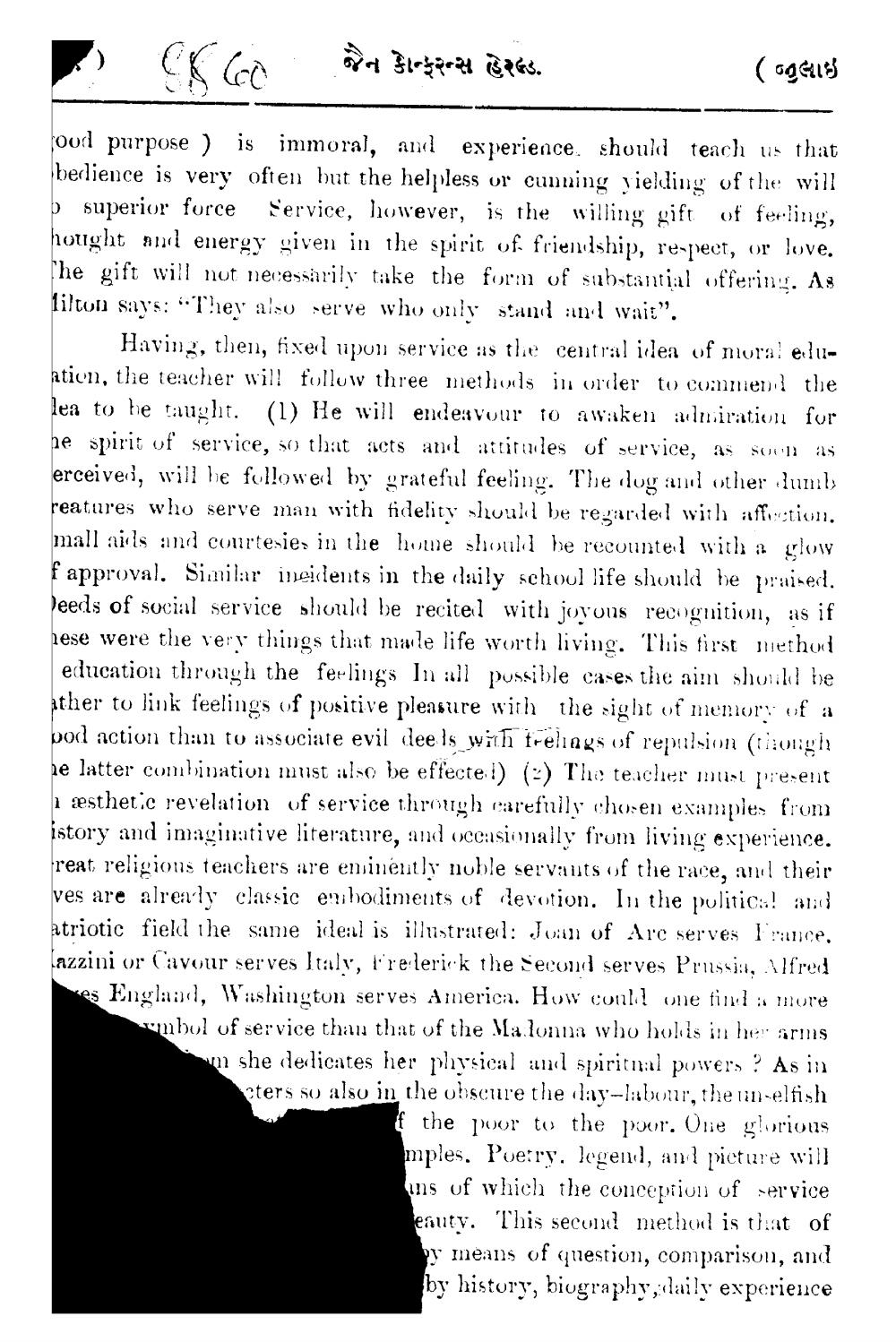________________
CK 6c
જૈન કોન્ફરન્સ હેન્સ્ડ.
( જુલાઇ
ood purpose) is immoral, and experience. should teach us that bedience is very often but the helpless or cunning yielding of the will
superior force Service, however, is the willing gift of feeling, hought and energy given in the spirit of friendship, respect, or love. The gift will not necessarily take the form of substantial offering. As lilton says: "They also serve who only stand and wait".
Having, then, fixed upon service as the central idea of moral eduation, the teacher will follow three methods in order to commend the lea to he taught. (1) He will endeavour to awaken admiration for he spirit of service, so that acts and attitudes of service, as Soch as erceived, will be followed by grateful feeling. The dog and other dumb reatures who serve man with fidelity should be regarded with affection. mall aids and courtesies in the home should be recounted with a glow f approval. Similar incidents in the daily school life should be praised. Deeds of social service should be recited with joyous recognition, as if hese were the very things that male life worth living. This first method education through the feelings In all possible cases the aim should be ather to link feelings of positive pleasure with the sight of memory of a pod action than to associate evil deels with feelings of repulsion (though he latter combination must also be effectel) (2) The teacher must present
aesthetic revelation of service through carefully chosen examples from istory and imaginative literature, and occasionally from living experience. reat religious teachers are eminently noble servants of the race, and their ves are already classic embodiments of devotion. In the political and atriotic field the same ideal is illustrated: Joan of Arc serves France. azzini or Cavour serves Italy, Frederick the Second serves Prussia, Alfred es England, Washington serves America. How could one find a more mbol of service than that of the Madonna who holds in her arms m she dedicates her physical and spiritual powers? As in cters so also in the obscure the day-labour, the un-elfish f the poor to the poor. One glorious mples. Poetry, legend, and picture will ns of which the conception of service eauty. This second method is that of by means of question, comparison, and by history, biography, daily experience




